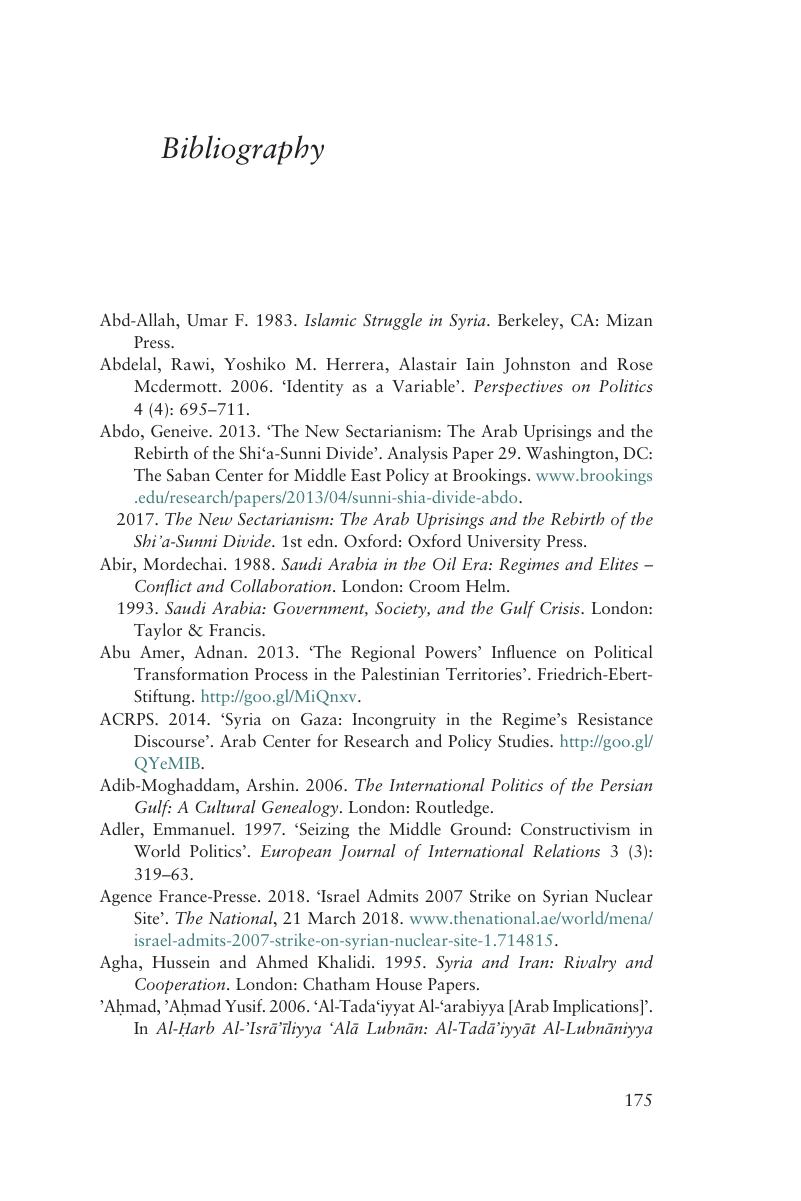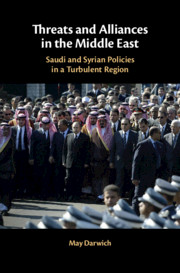Book contents
- Threats and Alliances in the Middle East
- Threats and Alliances in the Middle East
- Copyright page
- Contents
- Figures and Tables
- Acknowledgements
- Note on Transliteration and Translation
- 1 Introduction
- 2 Why and When States Perceive Threats
- 3 The Iran–Iraq War (1980–1988)
- 4 The 2006 Lebanon War
- 5 The 2009 Gaza War
- 6 Conclusion
- Bibliography
- Index
- References
Bibliography
Published online by Cambridge University Press: 09 September 2019
- Threats and Alliances in the Middle East
- Threats and Alliances in the Middle East
- Copyright page
- Contents
- Figures and Tables
- Acknowledgements
- Note on Transliteration and Translation
- 1 Introduction
- 2 Why and When States Perceive Threats
- 3 The Iran–Iraq War (1980–1988)
- 4 The 2006 Lebanon War
- 5 The 2009 Gaza War
- 6 Conclusion
- Bibliography
- Index
- References
Summary

- Type
- Chapter
- Information
- Threats and Alliances in the Middle EastSaudi and Syrian Policies in a Turbulent Region, pp. 175 - 205Publisher: Cambridge University PressPrint publication year: 2019



